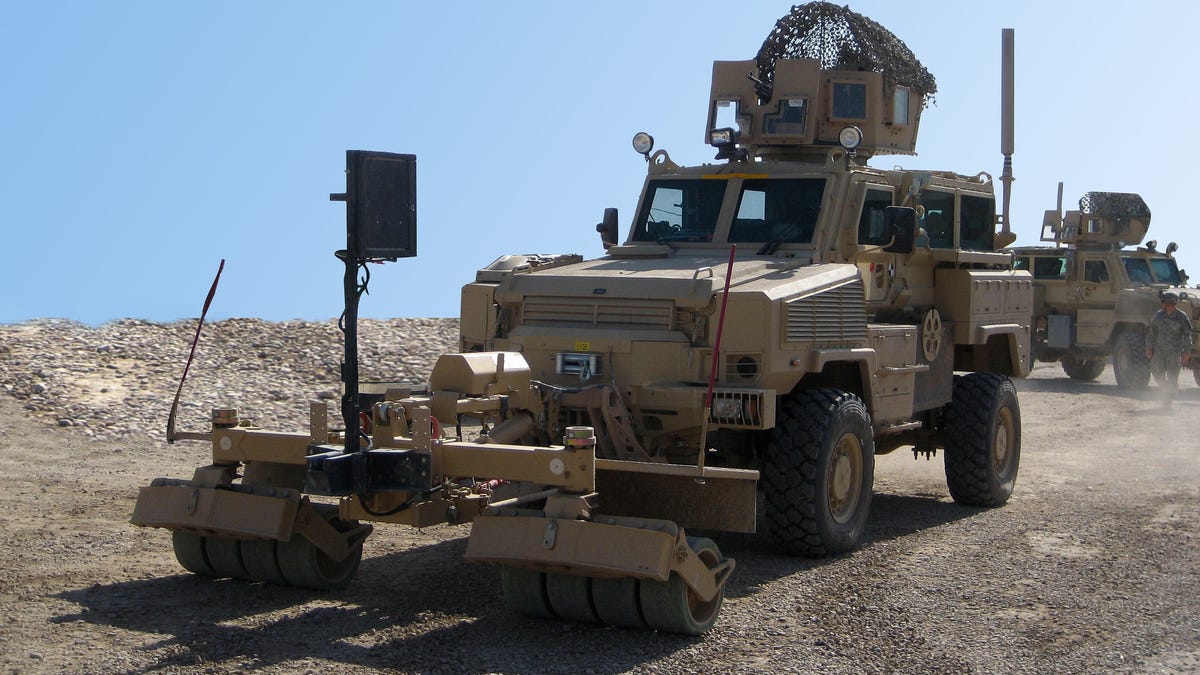Army to honor gear that lessens IED damage
Two of the military branch's top inventions for 2007, SPARK and HEAT are designed to help protect troops traveling in a combat zone.

Since very early on in the war in Iraq, U.S. troops have been finding new ways to protect themselves against explosions from roadside bombs: up-armored Humvees, heavy-duty MRAP vehicles, and a wide array of add-on gear.
For good reason, the U.S. Army has seen fit to honor some of those creations and adaptations among its annual list of top inventions. This year, the 2007 Army Greatest Invention winners include a mechanism called SPARK, designed to detonate roadside bombs--also known as improvised explosive devices, or IEDs--before they can do too much damage to a vehicle, and HEAT, a training device to help soldiers learn how to escape a Humvee overturned by an explosion or other mishap.
SPARK is short for "self-protective adaptive roller kit," a mine roller system that attaches to the front or rear of a vehicle. It works by applying downward pressure in order to trigger IEDs before they're underneath the vehicle where their explosions are most devastating.
HEAT is the Humvee egress assistance trainer, a full-scale mockup of the vehicle interior that can be rotated through 360 degrees by an electric motor. It simulates a rollover and lets soldiers practice opening their safety harnesses and exiting through doors or hatches, even when upside-down or at an odd angle. It is now a required training stop for all soldiers and for some Defense Department civilian employees who will be serving overseas.
Both projects were led by the Army's Tank Automotive Research, Development and Engineering Center, or Tardec.
The full top 10 Army Greatest Inventions of 2007 have yet to be made public; an awards ceremony is planned for June 12.
For last year's winners, including anti-IED devices and the Buckeye aerial imaging system, which produces stunningly crisp photos, see "Photos: Army touts top tech inventions."

